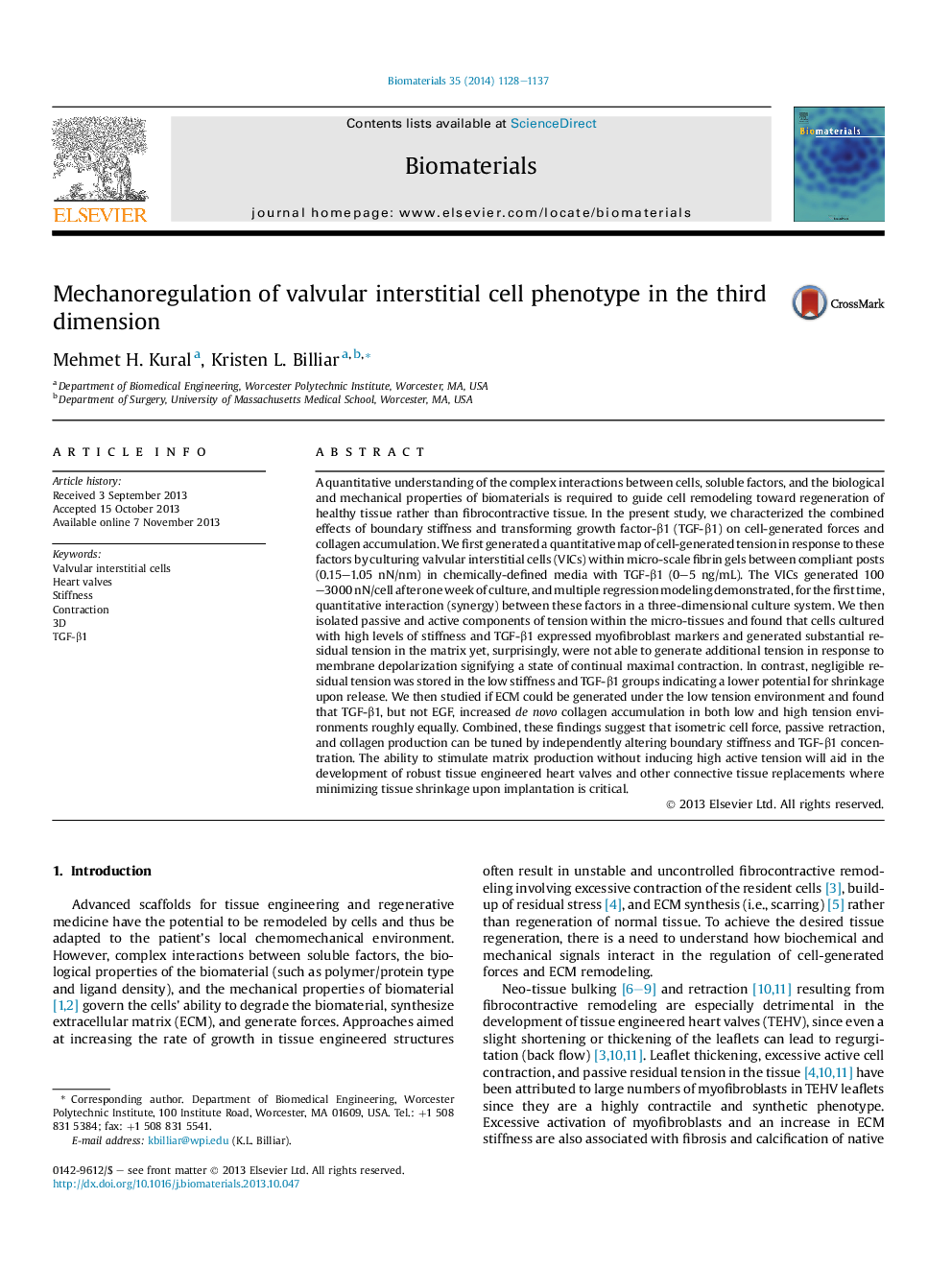| Article ID | Journal | Published Year | Pages | File Type |
|---|---|---|---|---|
| 10228580 | Biomaterials | 2014 | 10 Pages |
Abstract
A quantitative understanding of the complex interactions between cells, soluble factors, and the biological and mechanical properties of biomaterials is required to guide cell remodeling toward regeneration of healthy tissue rather than fibrocontractive tissue. In the present study, we characterized the combined effects of boundary stiffness and transforming growth factor-β1 (TGF-β1) on cell-generated forces and collagen accumulation. We first generated a quantitative map of cell-generated tension in response to these factors by culturing valvular interstitial cells (VICs) within micro-scale fibrin gels between compliant posts (0.15-1.05 nN/nm) in chemically-defined media with TGF-β1 (0-5 ng/mL). The VICs generated 100-3000 nN/cell after one week of culture, and multiple regression modeling demonstrated, for the first time, quantitative interaction (synergy) between these factors in a three-dimensional culture system. We then isolated passive and active components of tension within the micro-tissues and found that cells cultured with high levels of stiffness and TGF-β1 expressed myofibroblast markers and generated substantial residual tension in the matrix yet, surprisingly, were not able to generate additional tension in response to membrane depolarization signifying a state of continual maximal contraction. In contrast, negligible residual tension was stored in the low stiffness and TGF-β1 groups indicating a lower potential for shrinkage upon release. We then studied if ECM could be generated under the low tension environment and found that TGF-β1, but not EGF, increased de novo collagen accumulation in both low and high tension environments roughly equally. Combined, these findings suggest that isometric cell force, passive retraction, and collagen production can be tuned by independently altering boundary stiffness and TGF-β1 concentration. The ability to stimulate matrix production without inducing high active tension will aid in the development of robust tissue engineered heart valves and other connective tissue replacements where minimizing tissue shrinkage upon implantation is critical.
Related Topics
Physical Sciences and Engineering
Chemical Engineering
Bioengineering
Authors
Mehmet H. Kural, Kristen L. Billiar,
